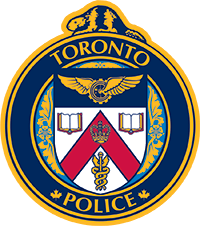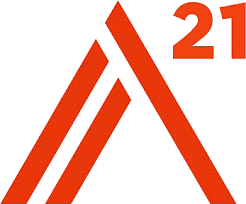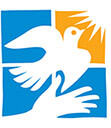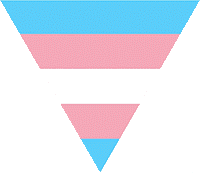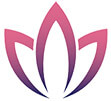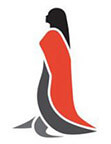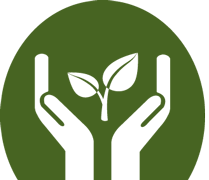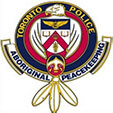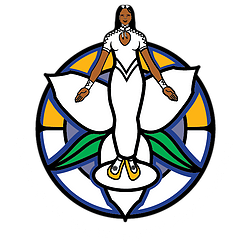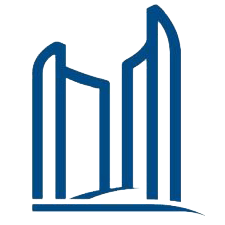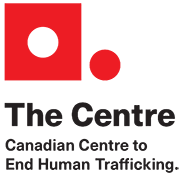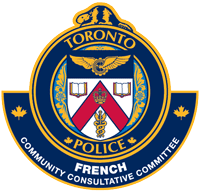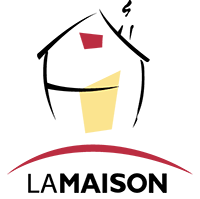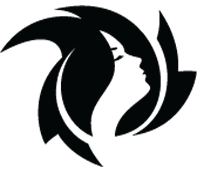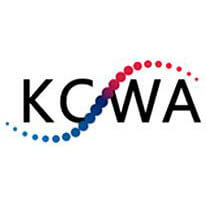For more information please visit: www.projectirise.org
What is Human Trafficking?
Questions
- Human trafficking is the equivalent of modern-day slavery and is a serious criminal offence under the Criminal Code of Canada.
- Human trafficking can include recruiting, harbouring or controlling a person's movements using force, physical or psychological coercion, or deception.
- Traffickers may or may not force their victims into the sex trade against their will.
- Traffickers coerce their victims through emotional manipulation, money, drugs and physical abuse. (Coerce means to persuade an unwilling person to do something by using force or threats.)
- Victims endure a life of despair, violence, fear and degradation from which it is very difficult to escape.
- Most police-reported cases in Ontario are vulnerable girls and women.
- Indigenous women and girls are especially vulnerable to being targeted by traffickers.
- Language barriers, fear of their traffickers, and/or fear of law enforcement frequently keep victims from seeking help, making human trafficking a hidden crime.
The following sex trafficking educational video is narrated by survivor Rhonelle Bruder. It is intended for parents and young people, and it provides an overview of how human trafficking works, how traffickers target and groom their victims, and what young viewers should be aware of.
Canadian Criminal Code of Canada
Since 2005, Human Trafficking has been a crime under Canada's Criminal Code.
Human Trafficking (Section 279.01) of the Criminal Code is defined as follows:
Every person who recruits, transports, transfers, receives, holds, conceals or harbours a person, or exercises control, direction or influence over the movements of a person, for the purpose of exploiting them or facilitating their exploitation is guilty of an indictable offence."
For a charge under this offence, the evidence must indicate that the suspect has: Recruited, transported, transferred, received, held, concealed, or harboured the victim, or exercised control, direction or influence over the movements of the victim; and done this for the purpose of exploiting the victim or facilitating their exploitation
Human trafficking includes three elements:
- Act: recruiting, transporting, transferring, harbouring, or receiving people
- Means: threat or use of force, coercion, abduction, fraud, deception, or abuse of power, or paying someone in control of the victim.
- Purpose: exploitation
There are three other main offences to address human trafficking in Canada's criminal law:
- Section 279.011 (Trafficking of a person under the age of eighteen years),
- Section 279.02 (Knowingly getting money or other benefits from Human Trafficking), and
- Section 279.03 (Taking or destroying travel or personal identification documents of a person being trafficked).
The Criminal Code defines "exploitation" as follows:
Exploitation (section 279.04): Causing someone to provide, or offer to provide, labour or a service by engaging in conduct that could reasonably be expected to cause that person to believe that their safety, or the safety of a person they know, would be threatened if they failed to do so.
Proving exploitation in regards to Human Trafficking requires proof that shows that a reasonable person, standing in the Survivor's shoes, would be afraid – taking into account all of the Survivor's unique circumstances (e.g., age, gender, national/ethnic origin, socioeconomic conditions, etc.). It does not imply that the Survivor must state that they feared for their own or someone else's safety.
An important point to remember is that a Victim's or Survivor's consent is NOT a defense to a Human Trafficking charge. In Canada, no one has the legal right to consent to being exploited.
- Human smuggling that involves moving someone across a border
- Independent consensual, paid sex work by individuals 18 years or older
- Under the Protection of Communities and Exploited Persons Act (PCEPA), selling sex is legal in Canada.
- However, advertising sexual services, paying for those services, and living off the material gains from selling sex, are illegal.
- In Canada, you have to be 16 years old to be able to legally agree to sexual activity. This is called the "age of consent". Sexual activity includes a range of activity from kissing to sexual intercourse and cannot include any abuse or exploitation. There are some exceptions for youth under 16, but only if the youth are in peer groups or close in age.
- You have to be 18 years old to legally agree to sexual activity that "exploits" – when it involves prostitution, pornography or when sexual activity happens in a relationship of authority, trust or dependency (for example with a teacher, coach or babysitter).
There is no single profile of a trafficking victim. Victims of human trafficking can be anyone—regardless of race, color, national origin, disability, religion, age, gender, sexual orientation, gender identity, socioeconomic status, education level, or citizenship status.
While human trafficking can affect anyone, the industry largely preys on those who are part of the most vulnerable, alienated communities in society.
Individuals who are at higher risk of being sex trafficked are:
- Women and girls (though boys, men and people who are LGBTQ2S+ are also targeted).
- Homeless and marginalized individuals.
- Individuals who struggle with low self-esteem and low self worth.
- Victims of bullying, discrimination and/or have a history of being abused.
- Individuals who struggle with addiction.
- Traffickers often use substances to recruit, control, or exploit their victims.
- Some traffickers purposely supply drugs to impressionable people to break down their resistance.
- Persons suffering from mental health impact factors often have a limited ability to assess risk and detect ill intentions
- Traffickers are skilled at detecting the vulnerabilities of persons with mental health issues and manipulating them to their advantage.
While sexual exploitation can happen to anyone, some young people are more vulnerable than others because of the group with which they identify.
Indigenous and Human Trafficking
- Indigenous individuals, particularly females, are much more likely to be sexually abused and trafficked than non-Indigenous individuals. The Indigenous community has been adversely affected by the trauma and abuses encountered as a result of colonization and residential schools.
- Due to a lack of understanding of the problem, family violence, poverty, isolation, substance use, gang involvement, and racism, individuals in this community may be more vulnerable to sexual exploitation.
Behavioural Indicators
- Changes in online social media presence - new profiles/accounts/online friends, not allowing parents to access accounts and/or profiles with different ages or names.
- Change in their daily routine, awake throughout the night and sleeping during the day.
- Posts provocative pictures on their social media and regularly dresses more provocatively regularly.
- When in contact with persons in authority avoids answering questions or lets others speak for them.
- Seems coached, frightened, nervous, paranoid hostile when engaging with persons in authority or the police.
- Avoids eye contact.
- Has been reported missing by their family.
- Change in attendance, grade and behaviour at school or drops out of school.
- Disconnects from family and friends, starts being elusive about whereabouts and new "friends".
- Dissociates and has a difficult time remembering conversations.
- Uses slang language that is often used in the sex industry (daddy/pimp/ bottom, etc).
Physical Indicators
- Signs of physical trauma (unexplained bruises, cigarette burns, etc.).
- Has a name or a symbol tattooed or branded onto their bodies (and are unwilling to explain the markings).
- No longer has possession of their identification (their ID is being held by someone else).
- Has large amounts of cash, pre-paid credit cards, hotel keys/receipts.
- Carries multiple cell phones.
- Has notebooks, slips of paper with nicknames, phone numbers, prices and dollar amounts.
- Is in possession of sexual paraphernalia such as bulk condoms and lubricant.
- Has provocative photos of themselves on their phone
- Has applications on their phone that disguise their phone number
- Has recurring medical complications involving sexually transmitted diseases
- Grooming is when someone builds a relationship, trust and/or emotional connection with an individual so they can manipulate, exploit and/or abuse them.
- While grooming the victim the trafficker will take the time to get to know the individual to assess their vulnerabilities in order to manipulate them.
- This process can take days, week, months and sometimes years. Over this time the trafficker will gradually earn their trust and have the individual become more and more reliant on them.
- The trafficker will usually promise a better life for the individual. This could be a relationship, a job, materialistic things etc.
- The trafficker will purposefully take advantage of the individual's wants and needs to exploit them.
- Children and young people who are groomed can be sexually abused, exploited or trafficked.
- A trafficker can be anyone; male or female, young, old or a peer. They can be new friends, classmates, mentors, girlfriends/ boyfriends, musicians and social media celebrities
- The process of grooming an individual can be done in person or online.
- Being very secretive about how they're spending their time, including when online.
- Having a boyfriend or girlfriend who they are reluctant to introduce to families and friends.
- Having money or new things like lingerie, clothes and mobile phones that they can't or won't explain.
- Sudden drastic change in appearance (begins wearing make-up excessively, dresses in a provocative manner).
- Underage drinking or drug use.
- Unexplained mood swings.
- Spending more time online or on their devices.
- Being upset, withdrawn or distressed.
- Sexualized behaviour, language or an understanding of sex that's not appropriate for their age.
- Sexualized and provocative social media posts.
- Spending more time away from home or going missing for periods of time.
- Accessing websites that are known for the sale of sex (Leolist.cc, etc.)
Once a trafficker has recruited an individual, they will continue to exercise control over them in both outward displays of control and subtle behaviours.
Traffickers establish a psychological hold and control their victims in various ways such as:
- Relationship manipulation (the trafficker will do anything to make the victim fall in love with him/her).
- The trafficker's goal is to remove any positive influences in a person's life so they become completely dependent on the trafficker (emotionally, physically and financially).
- The trafficker will make false promises of a better life for them – creating a sense of family when perhaps the individual did not have that in their life.
- Sexual abuse.
- Forcing the victim to engage in illegal / criminal activities.
- Threats – including violence against them and their families.
- Intimidation.
- Distribution of sexually explicit images or videos
- Physical violence and torture.
- Isolation from friends and family.
- Taking away their identity documents and passports.
- Financial manipulation – the trafficker will convince the victim that she needs to do sex work to support them financially.
- Extortion - obtaining property from the victim through the use of actual or threatened force, violence or fear.
- Impregnating a victim to create a familial bond
- The trafficker will encourage good behaviour by collecting and depositing cash at the end of each night so that the victims start the next day without any money. Victim will have to go out and raise more money if they wanted to guarantee food, housing, and other necessities.
- Traffickers will instill rivalry with their victims by rewarding the most profitable with recognition and affection while ignoring those who receive less.
- Traffickers will also put the victim in debt and make them financially dependent on them. A victim may be coerced into renting cars, paying for hotels, gas, food, and rent, among other things. They may also be forced to take out personal loans, with the proceeds going directly to the trafficker.
Rules Traffickers have for Victims
- Traffickers impose a dollar figure quota that victims will have to earn each day.
- A trafficker will often require his victim to call him "Daddy". The trafficker will play the role of father (or "Daddy") to the victim. The victim often does not know the trafficker's real identify and only refers to him as "Daddy" or by his street name
- Victims are often only addressed by their 'working girl' names
- A victim is not permitted to make eye contact with another trafficker. If this rule is violated, the victim may be exposed to extreme physical abuse
Labour traffickers use violence, threats, lies, debt bondage, or other forms of coercion to force people to work against their will in many different industries.
Trafficked persons are often promised high-paying jobs, education or travel opportunities, however, when they arrive they are forced to work long hours under unsafe and very poor working conditions for little or no money.
Victims will be led to believe that if they violate their work permits, they will lose their status and/or be deported. Many are subjected to abuse because they have families and children to support in their home country.
Anyone can become a victim of Labour Trafficking, but the most vulnerable individuals are new arrivals in Canada, who may have:
- Uncertain immigration status.
- Do not have possession of their travel documents or identification.
- Recruitment debts or living in poverty.
- Isolation due to language barriers, not being able to speak English.
- A lack of understanding of their rights in Canada or how to get assistance.
Examples of the type of industries where Labour Trafficking occurs are: construction, agriculture, restaurants, and manufacturing, food processing and nail salons.
Domestic Servitude is another form of Labour Trafficking within a household in which trafficked individuals may appear to be nannies, housekeepers, or other types of domestic workers. They are often exploited by working many hours at a time with little to no time off, earning minimal or no compensation, and, in some cases, their movement is restricted.
Signs of Labour Trafficking include:
- Being underpaid, not paid at all, or wages are deducted unjustifiably.
- Working excessive days or hours, forced to work overtime, or with no breaks.
- Forced to engage in duties outside the employment contract.
- Charged high, fraudulent recruitment fees to secure employment in Canada.
- Exposed to violence, including sexual assault, or threats of violence or harm.
- Abused emotionally or psychologically.

